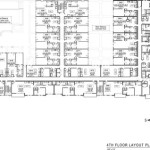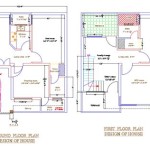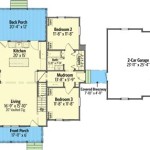Nantucket Colonial House Plans: A Guide to Classic Island Design
Nantucket Colonial house plans represent a distinct architectural style rooted in the history and environment of Nantucket Island, Massachusetts. This style, influenced by early American architecture and adapted to the island's maritime culture and climate, offers a blend of practicality, aesthetics, and historical significance. Understanding the key characteristics of Nantucket Colonial house plans is essential for those considering building or renovating a home in this style. These plans provide a blueprint for a living space that honors the past while offering modern comfort and functionality. The emphasis on simplicity, durability, and natural light creates homes that are both beautiful and livable.
The island of Nantucket, with its rich history as a whaling center, played a crucial role in shaping the architectural style. The relative isolation of the island contributed to the preservation of distinct building traditions. Nantucket Colonial homes often feature elements designed to withstand harsh weather conditions, making them sturdy and resilient. The style also reflects the island's aesthetic preferences, which favor clean lines, understated elegance, and a connection to the surrounding landscape. This article delves into the essential components of Nantucket Colonial house plans, examining their historical context, defining characteristics, and modern adaptations.
Historical Influences on Nantucket Colonial Architecture
The historical backdrop of Nantucket Colonial architecture is intrinsically linked to the island's development as a prominent whaling port. During the 18th and 19th centuries, Nantucket flourished economically, resulting in the construction of substantial homes for wealthy merchants and ship owners. These houses were influenced by the prevailing Colonial architectural styles of the mainland, but they also incorporated unique adaptations to suit the island's specific needs and resources. The Quaker influence on Nantucket's culture also played a role in shaping the architectural style. Quaker values of simplicity and practicality are reflected in the unadorned facades and functional layouts of many Nantucket Colonial homes.
English architectural traditions, particularly those brought over by early settlers, formed the foundation of the Colonial style. These homes were typically characterized by symmetrical facades, central entrances, and a focus on functionality. However, the maritime environment of Nantucket led to the development of specific features, such as the use of weather-resistant materials and designs optimized for withstanding strong winds and coastal storms. The availability of local materials, such as cedar shingles and readily sourced wood, also influenced the construction techniques and aesthetic choices of the time.
The evolution of Nantucket Colonial architecture can be seen in the transition from simple, utilitarian structures to more elaborate homes reflecting the prosperity of the whaling era. As Nantucket became a significant economic center, homeowners began to incorporate more decorative elements into their homes, such as detailed trim, larger windows, and more sophisticated floor plans. These enhancements added a touch of elegance to the traditional Colonial style while maintaining its fundamental principles of simplicity and functionality. The impact of shipbuilding is also reflected in some homes, where elements of ship design are incorporated into the structure’s form.
Key Characteristics of Nantucket Colonial House Plans
Several defining characteristics distinguish Nantucket Colonial house plans from other architectural styles. These elements, which combine historical influences with practical considerations, create homes that are both aesthetically pleasing and well-suited to the island's environment. One of the most prominent features is the use of cedar shingles for exterior siding. Cedar shingles are highly durable and weather-resistant, making them ideal for withstanding the harsh coastal climate. Over time, the cedar weathers to a distinctive gray color, contributing to the quintessential Nantucket look.
Symmetry is another key element of Nantucket Colonial architecture. Homes typically feature a balanced facade with a central entrance flanked by evenly spaced windows. This symmetrical design evokes a sense of order and stability, reflecting the traditional values of the Colonial period. The rooflines are generally simple, with gable or hip roofs being the most common. These roof styles are both aesthetically pleasing and practical, providing effective drainage and resistance to wind. Dormers, small windows set into the roof, are often used to provide additional light and ventilation to the upper floors. These contribute to the charm of the style while increasing usable space.
The interior layouts of Nantucket Colonial homes are often characterized by a central hallway leading to the main living spaces. The floor plans are designed for functionality and efficiency, with a focus on creating comfortable and livable spaces. Fireplaces are frequently found in the main living areas, providing warmth and serving as focal points. Natural light is also a priority, with large windows strategically placed to maximize sunlight exposure. The interiors often feature simple, elegant detailing, with unadorned trim and hardwood floors being common elements. The use of natural materials, such as wood and stone, contributes to the overall sense of warmth and authenticity.
Furthermore, the landscaping surrounding Nantucket Colonial homes often complements the architectural style. Traditional gardens, featuring native plants and simple designs, are common. The emphasis is on creating a harmonious relationship between the home and its surroundings, reflecting the island's natural beauty. Stone walls and picket fences are often used to define property lines and add to the overall charm of the landscape. The integration of outdoor living spaces, such as porches and patios, is also a common feature, allowing residents to enjoy the island's mild climate.
Modern Adaptations of Nantucket Colonial Design
While preserving the historical integrity of the Nantucket Colonial style is essential, modern adaptations allow homeowners to incorporate contemporary amenities and design features into their homes. These adaptations blend the classic aesthetic with modern functionality, creating homes that are both beautiful and comfortable for contemporary living. One common adaptation is the integration of open-concept floor plans. While traditional Nantucket Colonial homes often feature defined rooms, modern designs may incorporate open spaces that flow seamlessly from one area to another. This creates a more spacious and airy feel while maintaining the overall character of the style.
Energy efficiency is another important consideration in modern Nantucket Colonial house plans. Incorporating energy-efficient windows, insulation, and heating and cooling systems can significantly reduce energy consumption and lower utility bills. Sustainable building materials, such as reclaimed wood and recycled content, are also increasingly used in modern adaptations. These materials not only reduce the environmental impact of construction but also add a unique character and charm to the homes. Solar panels can be discreetly integrated into the roof design to provide renewable energy without detracting from the traditional aesthetic.
The use of modern appliances and fixtures is another key aspect of contemporary Nantucket Colonial design. High-end kitchens with state-of-the-art appliances are often incorporated into the floor plans, providing all the conveniences of modern living while maintaining the overall aesthetic of the home. Bathrooms are also updated with modern fixtures and finishes, creating luxurious and comfortable spaces. Smart home technology can be seamlessly integrated into the homes, allowing homeowners to control lighting, temperature, and security systems remotely. Overall, the modern adaptations to this style balance historical charm with contemporary comfort and efficiency, making these homes desirable for a wide range of homeowners.
The continued popularity of Nantucket Colonial house plans demonstrates the enduring appeal of this architectural style. By understanding the historical influences, key characteristics, and modern adaptations, individuals can create homes that honor the past while embracing the future. The style's emphasis on simplicity, durability, and natural light ensures that these homes will remain timeless and beautiful for generations to come. The architectural style captures the essence of Nantucket Island, creating a sense of place and connection to its rich history and natural beauty.

1931 Colonial Revival Single Story Cottage Aladdin Homes Nantucket

House Plan Nantucket Sound Sater Design Collection

House Plan Nantucket Sound Sater Design Collection

Nantucket Retirement House Plans Ranch Floor

House Plan Nantucket Sound Sater Design Collection

Nantucket House Design Residence Style

Nantucket Style Chic Design Inspiration House Exteriors O Lovely Homes Designs Exterior

House Plan Nantucket Sound Sater Design Collection

A Nantucket Summer On Instagram Starting July In The Pink Anantucketsu Shingle Style Homes Colonial Exterior House Plans

Nantucket Retirement House Plans Ranch Floor








